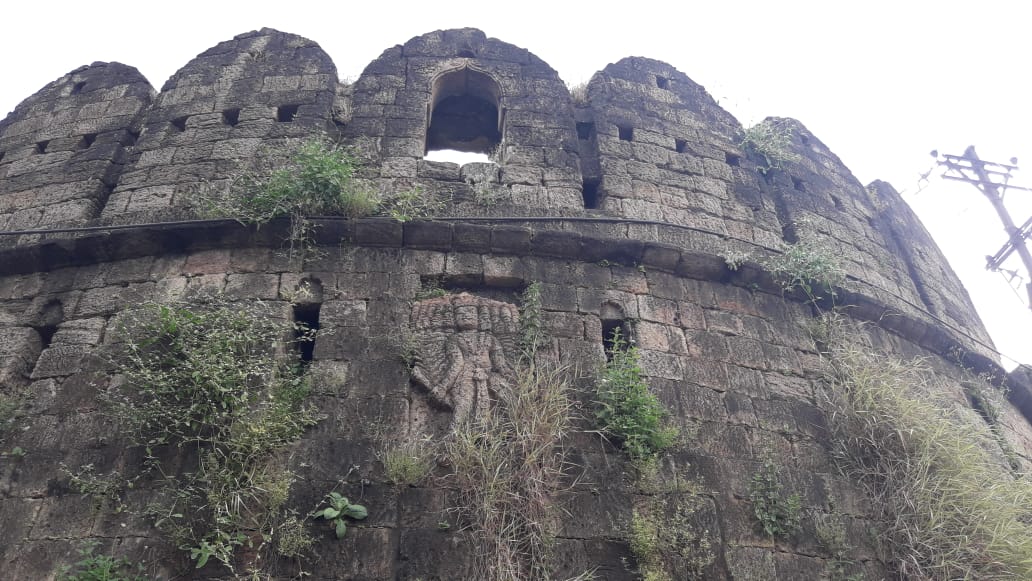Almost all scholars are unanimous that Ajivikas were determinists. Scholars invariably try to portray themselves as different from the others, but, for a change, they are united in their opinion about the Ajivikas.
Texts in Pali, Prakrit and Sanskrit, all proclaim in one voice that the Ajivikas were determinists. Even a historian like Arthur L. Basham describes them as determinists at the very outset of his book, History and Doctrines of the Ajivikas[1]. Basham cannot be blamed either. In fact, he deserves all the praise for his detailed, comprehensive study that introduced this Indian philosophy to the world. Before him, writers like Rudolf Hoernle and Benimadhab Barua had done research on the Ajivikas but their works were little more than annotated articles. Basham studied not only Pali, Prakrit and Sanskrit but also Tamil texts to understand the Ajivika philosophy. That was how we came to know about Buddha and other great Ajivika thinkers before him. Basham’s work also ignited interest in the Ajivikas among the writers and intellectuals from all over the world.
Basham does admit that all the sources of information about the Ajivikas were works of their opponents but does not say anything about the Ajivikas being described as determinists or fatalists in these sources. It might have been his compulsion. After all, he could not have gone against the primary sources. If all texts describe the Ajivikas as determinists, how could Basham have described them as something else? However, to admit that all the texts from which information about the Ajivikas has been gleaned were authored by their opponents and therefore biased and then to accept their opinion in toto cannot be called sound research methodology.
With no works written by the Ajivikas available and with information about them scattered in Jain, Buddhist and Brahmin sources, Benimadhab Barua is right when he says that while writing about Ajivikas, “a tremendous effort of imagination and genial intellectual sympathy are essential at every step.”[2] By “imagination and genial intellectual sympathy”, Barua does not mean that the Ajivika Sramans should be made the subject matter of a fictional account in the style of the Puranas. What he means is that the references to Ajivikas in different sources, both complementary and contradictory to each other, should be deeply investigated to get to the truth.

Basham writes that like Buddhism and Jainism, Ajivikism was also a heretical sect, meaning it was a faith that was against the established religion or religious beliefs. But by making this claim, Basham ignores many facts. By claiming that the Buddhist and Jain faiths emerged as a reaction to or to counter or to reform brahmanical or Vedic religion, he gives the Brahmanical/Vedic religion the status of the original, indigenous religion of India – this, when the remains of the Indus Valley Civilization had already been discovered. It had also been revealed that it was a non-Aryan civilization. According to archaeologists, the Indus Valley Civilization flourished from 3300-1750 BCE, while the Aryans entered India around 1500 BCE. We can say that when the Aryans set foot in India, the Indus Valley Civilization was on the wane, in its last phase. Writing about the religious beliefs of the people of the Indus Valley Civilization, archaeologist John Marshall says that the religious traditions and culture of the Indus Valley Civilization and its deities, as reflected in the seals and the sculptures belonging to that era, find echo in remote villages of India even thousands of years after that civilization ceased to exist. The Indus Valley Civilization was quite similar to the Sramanic tradition and so we can safely say that the Ajivika philosophy has a connection with the philosophical tradition of the indigenous civilization that flourished in the valley of the Indus. A glimpse of those traditions can also be seen in the Rig Veda. According to the Mahabharata, “One should always avoid the Vahikas – those impure people that are out of the pale of virtue, and who live away from the Himavat and the Ganga, Saraswati, Yamuna, Kurukshetra and the Sindhu and its five tributaries.”[3] It may be mentioned here that the idols of deities unearthed in excavations in villages around Magadha and Vaishali resemble personalities revered by the people of the Indus Valley Civilization, as revealed by the seals and the statues belonging to that age. That shows that by the Buddhist era, the culture of the Indus Valley Civilization had spread up to Magadha and the surrounding areas.
Scholars believe that both Jainism and Buddhism were middle-of-the-road religions. “Soul” and “god” had been the topics of incessant discussions and debates for centuries. Instead of giving their opinion on the two issues, both Buddha and Mahavira just skirted them. They built a path for themselves between the extremely fideistic and purely materialistic philosophies. As the people were forced to spend their hard-earned money on yagnas (sacrifices), donations and other religious rituals, the two religions opposed ritualism. In any case, the Brahmanical religion and philosophy as well as rituals like yagnas were not meant for the ordinary people. The Brahmins and their narcissistic world were confined to the ashrams. They took donations from the well-off and the elite sections of society to meet the expenses of yagnas and other rituals. In return, they took up the responsibility of educating the sons of these people. The Sramanic religions had a following among the ordinary people. The Brahmins, with their elitist mindset and their firm belief in their superiority, looked down upon the adherents of the Ajivika faith, mainly the artisanal class, dubbing them as “Lok” (folk) and their philosophy as “Lokayat”.
The materialist Ajivika philosophy was the real rival of Brahmanism and it was to strike a balance and develop coordination between the two, that the Buddhist and Jain philosophies were born.
Did determinism emanate from Aryan philosophies?
The people of the Indus Valley Civilization had founded the most advanced urban civilization of its time by their hard work, skill and enterprise. They were in contact with other civilizations flourishing hundreds or thousands of miles away. It was probably the fame of the Indus Valley Civilization that drew the Aryans to the Land of the Five Rivers. Unfortunately, by the time they arrived here, one of the world’s greatest civilizations was in the throes of death. In comparison with the people of the Indus, the Aryans were culturally backward. Now, backward civilizations are invariably wary of coming in contact with developed civilizations. The Aryans must have feared that the primitive beliefs which they had brought with them from their land may come under threat by interaction with an urban civilization. It is also possible that they were shocked to find a civilization, the stories of the glory of which had made them embark on their long voyage, in decline. The disappointment they must have felt made pessimism one of the foundation blocks of their philosophies. They must have felt that the world beyond the skies was more stable than the world on this earth. That is the reason they imagined the abode of their gods in the skies.
There is yet another possibility. Latest research indicates that a killer famine struck the region around the Indus Valley in 1800 BCE, forcing the people of the Indus valley to migrate. The Aryan economy was pastoral. They learnt farming from the Indus Valley Civilization. They, too, must have moved northwest in search of fodder and water for their cattle. These migrations would have brought the two civilizations in contact, leading to both conflict and assimilation. Centuries later, the non-Aryans from the Indus Valley built an urban civilization in the Terai region. By the time, the Aryans had also developed their yagna culture. In their new land, too, the Aryans set up their ashrams away from habitations, in places where food and water for their cattle was easily available.
Both certainty and uncertainty are the hallmarks of nature. The sun rises and sets at fixed times. Plants germinate, grow, produce fruits and flowers, and die – all within a fixed time frame. But then, there are uncertainties, too. Sometimes it may rain too much, sometimes too little, and no one knows when a storm will flatten everything. Life may be certain, but death is totally uncertain. All this may have made man feel dejected, disappointed and depressed. This dejection took the form of the theory that the world is an illusion in Brahmanical philosophy. The Ajivika belief in uncertainty may also have had the same source. This argument seems sound at first glance, but it is also true that determinism and the belief that everything is uncertain are not the same thing.
Uncertainty is inherent to nature and is not dependent on any extraneous factor or force. However, fatalism presupposes belief in a supernatural power. The Ajivikas negate the idea of god or soul, beyond life and nature. So, they can be called believers in uncertainty, but they cannot be called determinists or fatalists. The real fatalists are those who believe that invisible gods dwelling in the skies are the determiners of the events on this earth and those who sacrifice hundreds of animals in yagnas to propitiate them.
References
[1] Arthur Llewellyn Basham, History and Doctrines of the Ajivikas, Luzac and Company Limited, London, p 3
[2] Benimadhab Barua, The Ajivikas, University of Calcutta, 1922, p 22
[3] Bahishkrita himvata gangya cha bahishkritah
Sarasvatya yamunaya kurukshetren chapi ye
Panchana sindhushthanam nadeenam yentarashrita (Mahabharata, Karna Parva, 44.6-7)
(To be continued)
(Translated from the original Hindi by Amrish Herdenia)
Forward Press also publishes books on Bahujan issues. Forward Press Books sheds light on the widespread problems as well as the finer aspects of Bahujan (Dalit, OBC, Adivasi, Nomadic, Pasmanda) society, culture, literature and politics. Contact us for a list of FP Books’ titles and to order. Mobile: +917827427311, Email: info@forwardmagazine.in)





